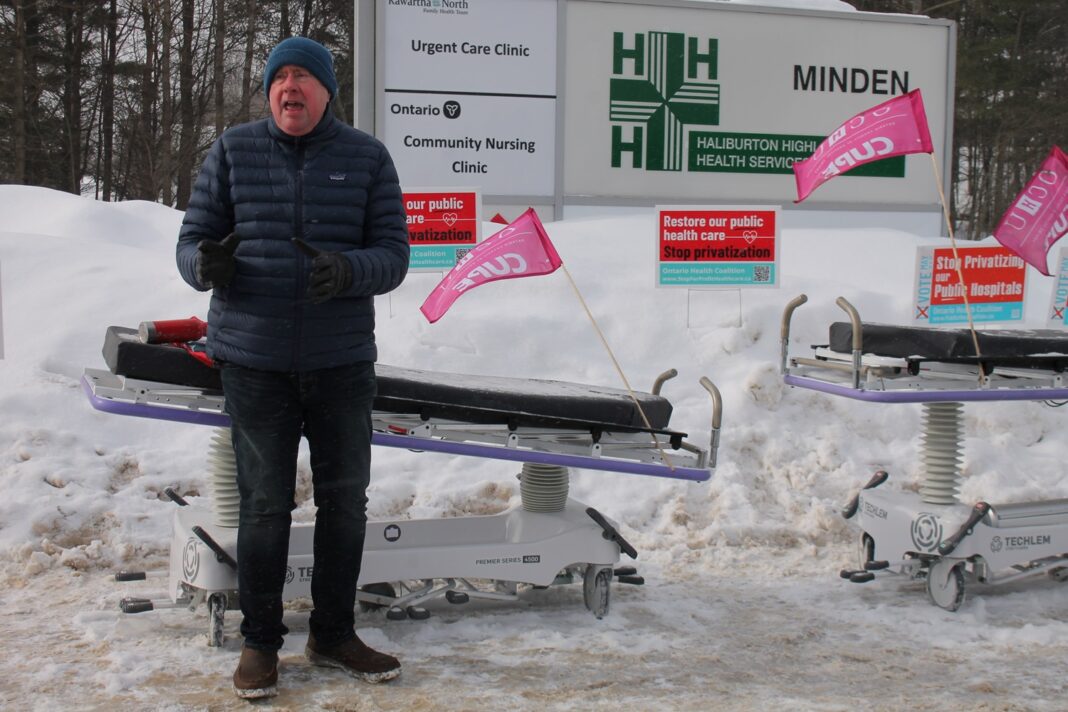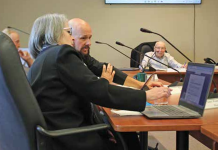With just 15 days until the provincial election, CUPE’s Ontario Council of Hospital Unions brought two stretchers to Haliburton Highlands Health Services (HHHS) Minden site Feb. 11 to symbolize “the crisis in Ontario’s health care.”
The same union that brought The Trojan Horse to the Highlands in December said their symbolic tour to 30 communities in Ontario represented: 1,860 people on stretchers in hospital hallways, up from 826 in June 2018 when Premier Doug Ford promised to end hallway medicine; 2.5 million people without a family doctor; palliative home care patients dying without painkillers and medical supplies; 250,000 people waiting for surgeries; nearly 50,000 people waiting for long-term care and “constant ER closures in small towns.”
President of OCHU-CUPE, Michael Hurley said, “the crisis in health care affects almost every family. The entire health care sector is staggering. There is no end to the staffing shortages; ER closures, waits for surgeries or for long-term care beds or for a family doctor, or for appropriate home care services. We hope to help ensure that this election focuses on solutions to this crisis.”
Hurley claimed that in 2023, HHHS operated at 98.1 per cent capacity, well above the 85 per cent recommended maximum bed occupancy level. According to analysis by OCHU-CUPE, HHHS must add at least 17 beds to achieve safe occupancy levels.
Lauren Ernst, communications for HHHS, responded that based on early response from Ontario Health “for 2029/2030, we should plan for 38 beds based on the activity/bed capacity of hospitals with similar number of emergency visits and adjusted for 90 per cent occupancy rate.
“This compares to our initial plan of 24 beds, which used 2022 Ministry of Finance population data. We look forward to advancing to the next stage of master planning where we will use updated data and get into more details. However, in the near term, our initial plans include increasing to about 30 beds from 15 beds.”





